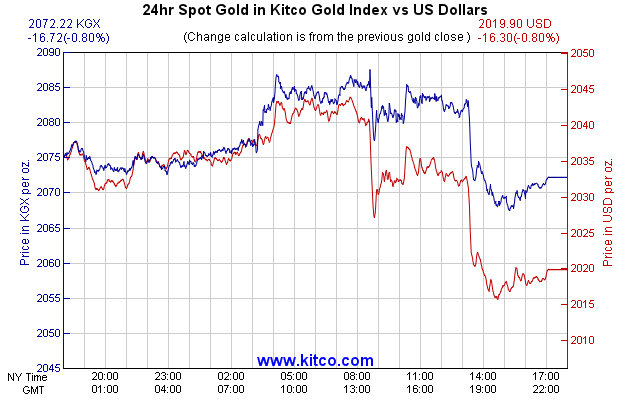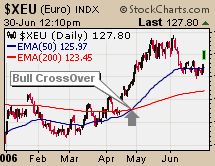
The 2011 gold outlook from most analysts, simply put, is higher.
But for new investors wanting to join the gold rush, there is still some homework to do. They might want to familiarize themselves with the many ways in which they can invest--from coins to exchange-traded funds to mining stocks--to decide which are most suited for them.
Gold has been in a decade-long bull market, rising from roughly $250 an ounce to a recent record of $1,431. Many look for still more gains. BNP Paribas has forecast an average of $1,500 in 2011, while Goldman Sachs has a 12-month target of $1,690 (but also cautioned that gold could peak in 2012)

- A : January 8th, 2010
1126.75 - January 8th, 2010 - Precious metals price action turned positive on this day in New York, following weaker dollar values in the wake of dismal employment data. The dollar appeared to be anticipating tomorrow's US payroll figures which are expected to show that the economy has shed jobs during every single month of 2008 and likely pushed unemployment to 7% for a 16-year high. Crude oil fell to under $42 per barrel on apprehensions generated by the employment situation and was only marginally supported by Russia's failure to come to terms with the Ukraine in the gas impasse.
- B :January 11th, 2010
1153.00 - January 11th, 2010 - The U.S. economy lost 524,000 jobs in December, closing out the worst year for job losses since World War II, the Labor Department said this date. Nearly 2.6 million jobs were lost in 2008, with 1.9 million destroyed in just the past four months, according to a survey of work places. It's the biggest job loss in any calendar year since 1945. The unemployment rate rose to 7.2%, the highest in 16 years. Unemployment increased by 632,000 to 11.1 million, according to the survey of households.
- C : May 7th, 2010
1202.25 - May 7th, 2010 - Gold prices hovered around the $1200 mark early this morning, as their after-hours rise to five-month highs above that round figure on the back of spreading fears about Greek contagion and the Dow's 'air pocket incident' prompted profit-takers to do just that. The U.S. economy added 290,000 jobs in April, the biggest gain in four years. However, the unemployment rate rose slightly, from 9.7% to 9.9%. This is mostly due to people who had previously given up looking for work restarting their job search.
- D : May 7th, 2010
1202.25 - May 7th, 2010 - Gold prices hovered around the $1200 mark early this morning, as their after-hours rise to five-month highs above that round figure on the back of spreading fears about Greek contagion and the Dow's 'air pocket incident' prompted profit-takers to do just that. The U.S. economy added 290,000 jobs in April, the biggest gain in four years. However, the unemployment rate rose slightly, from 9.7% to 9.9%. This is mostly due to people who had previously given up looking for work restarting their job search.
- E : November 4th, 2010
1381.00 - November 4th, 2010 - As was largely expected the GOP took control of the US House of Representatives and gained Senate seats as well. Gold futures at one point rocketed ahead by nearly $60 an ounce this day compared to their low from the previous afternoon, when the market was initially choppy in the wake of a Federal Open Market Committee announcement of another $600 billion in quantitative easing.
- F : November 9th, 2010
1421.00 - November 9th, 2010 - Commodity markets were on fire early this day, led by surging precious metals prices that saw gold futures hit a fresh record high and silver futures hit a fresh 30-year high. Gold's surge in price continued from the mid-term election and QE2 announcement on November 4.
- G : November 25th, 2010
1373.25 - November 25th, 2010 - South Korea deployed additional long-range artillery missiles on a border island and vowed to make North Korea “pay the price” for its first direct assault on the country since 1953. Although an armistice has been in place since that time, the two Koreas are still technically at war with each other. A top Chinese emissary met with President Lee on Sunday, after China called for a multilateral emergency meeting aimed at defusing the aggravating crisis.
- H : December 6th, 2010
1415.25 - December 6th, 2010 - China and its anti-inflation/anti-bubble combat took centre stage in the market news flows once again on this date, as its People's Bank announced a half percent hike in reserve requirements (to 18%) for the country's banks. The move represented the sixth such tightening this year. Polled analysts believe that inflation may have risen further, possibly to as high a level as 4.6%, and that the PBOC might raise interest rates even as soon as Sunday if it feels that the inflation dragon is growing yet another unwelcome head and getting ready for a menacing flight.
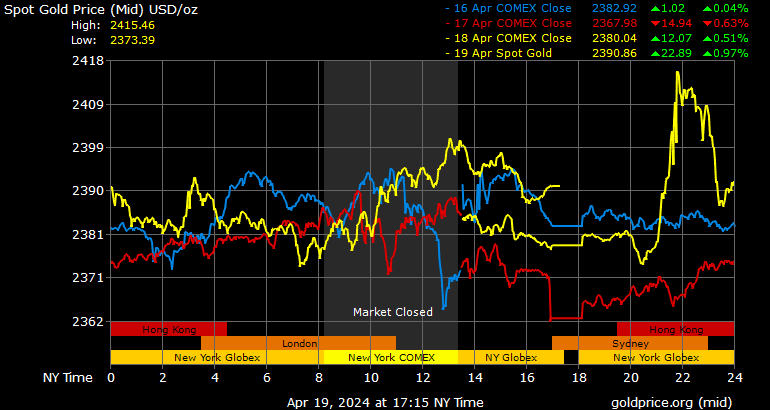


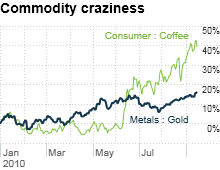
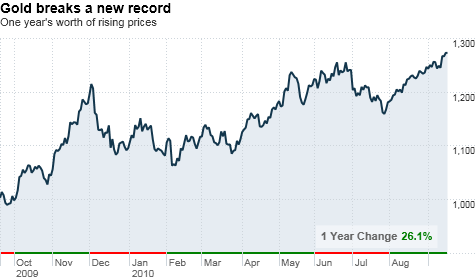


 Looking at a weekly chart, we can see the uptrend extending from 2008. The 50-day moving average is showing strong buying coming in, and the 200-week average shows a smoother line. Similar strong support is seen near $17 on the weekly chart also. A $2 move in silver would give a target of $19.50, also a strong resistance level. If gold really does take off, I would expect even higher prices ahead for silver.
Looking at a weekly chart, we can see the uptrend extending from 2008. The 50-day moving average is showing strong buying coming in, and the 200-week average shows a smoother line. Similar strong support is seen near $17 on the weekly chart also. A $2 move in silver would give a target of $19.50, also a strong resistance level. If gold really does take off, I would expect even higher prices ahead for silver. Please contact me to develop a customized strategy to fit your unique situation. I’d be happy to take your questions about this or other markets.
Please contact me to develop a customized strategy to fit your unique situation. I’d be happy to take your questions about this or other markets.






